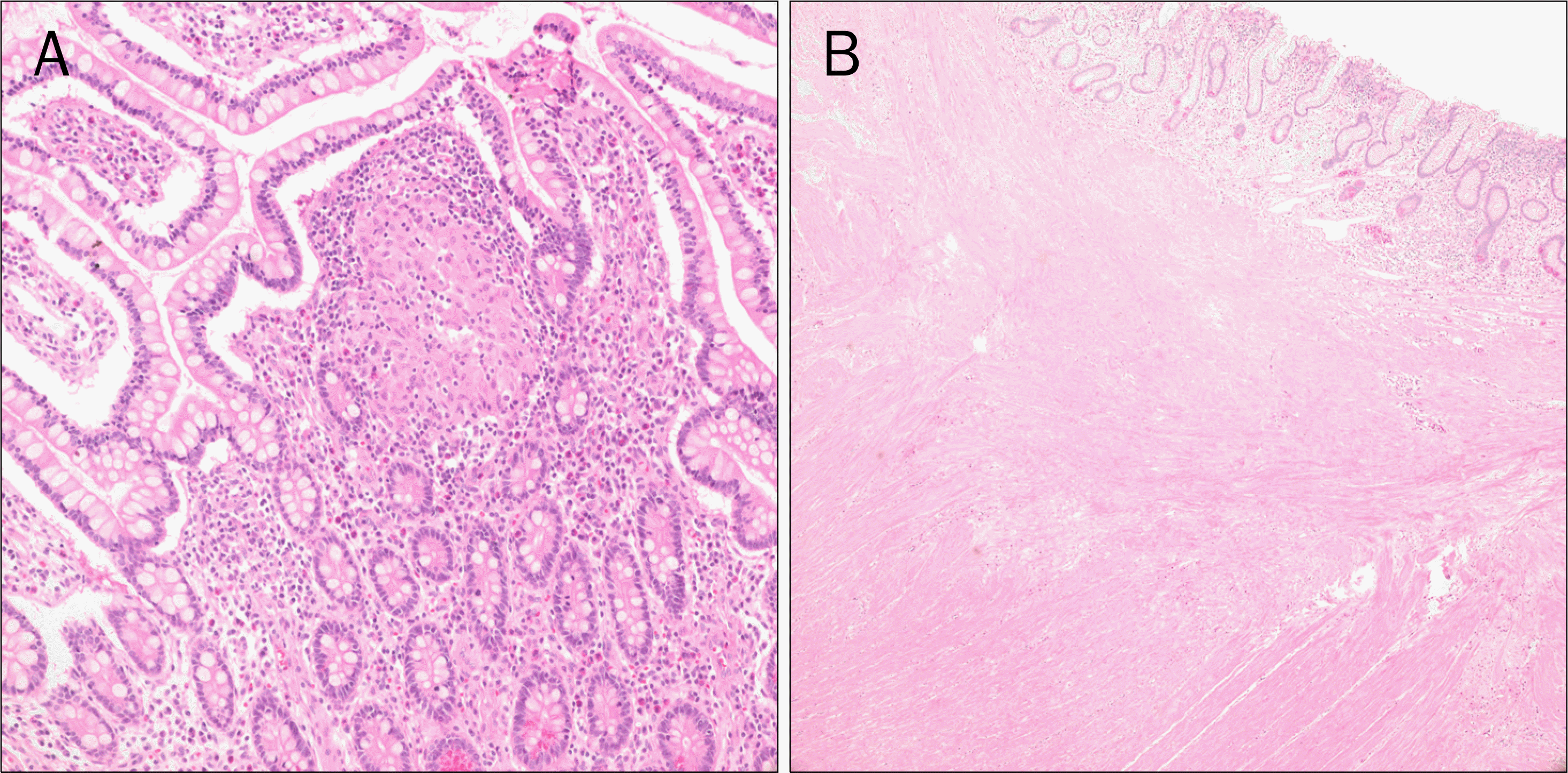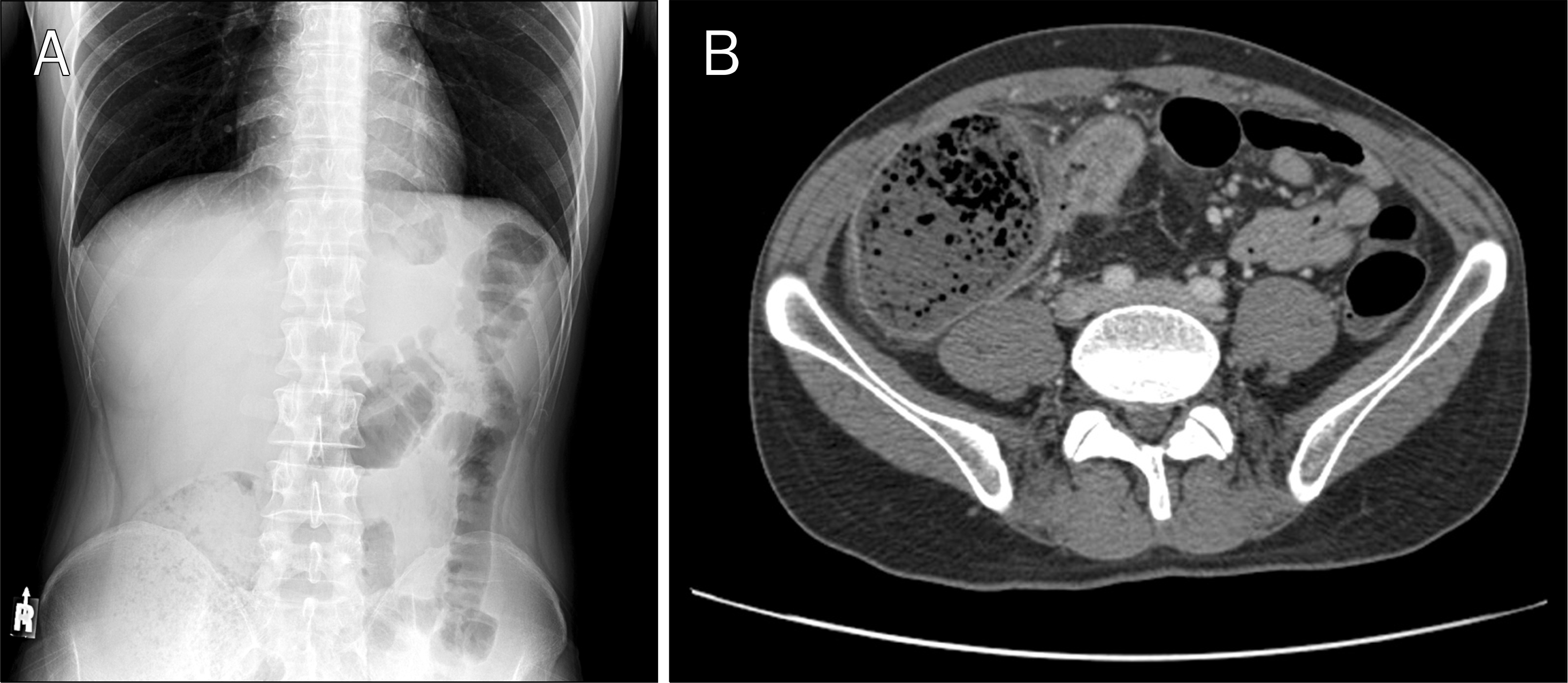Abstract
Background/Aims
Crohn's disease is a chronic inflammatory bowel disease. Stricture is a very important indication for surgical intervention as strictures can lead to intestinal obstruction. Strictures can be divided into inflammatory and fibrous strictures. Intestinal obstruction due to inflammatory stricture is expected to be resolved with medical treatment. However, factors that can predict the response to medical treatments are unknown. In the present study, we aimed to identify the factors that can predict the response to medical treatments in Crohn's disease patients with intestinal obstruction.
Methods
Data were collected by retrospectively reviewing the medical records of patients with Crohn's disease who visited the emergency department at Samsung Medical Center in Seoul from January 1, 2000 to December 31, 2010 because of intestinal obstruction. Based on the response to medical treatments, we classified the patients as responders and non-responders and compared the clinical, biochemical, and radiological findings of the two groups.
References
1. Louis E, Collard A, Oger AF, Degroote E, Aboul Nasr El Yafi FA, Belaiche J. Behaviour of Crohn's disease according to the Vienna classification: changing pattern over the course of the disease. Gut. 2001; 49:777–782.

2. Bernell O, Lapidus A, Hellers G. Risk factors for surgery and post-operative recurrence in Crohn's disease. Ann Surg. 2000; 231:38–45.

3. Jewell DP, Satsangi J, Lobo A, et al. Infliximab use in Crohn's disease: impact on health care resources in the UK. Eur J Gastroenterol Hepatol. 2005; 17:1047–1052.

4. Whelan G, Farmer RG, Fazio VW, Goormastic M. Recurrence after surgery in Crohn's disease. Relationship to location of disease (clinical pattern) and surgical indication. Gastroenterology. 1985; 88:1826–1833.
5. Stallmach A, Schuppan D, Riese HH, Matthes H, Riecken EO. Increased collagen type III synthesis by fibroblasts isolated from strictures of patients with Crohn's disease. Gastroenterology. 1992; 102:1920–1929.

6. Rieder F, Fiocchi C. Intestinal fibrosis in IBD–a dynamic, multifactorial process. Nat Rev Gastroenterol Hepatol. 2009; 6:228–235.

7. D'Haens G, Van Deventer S, Van Hogezand R, et al. Endoscopic and histological healing with infliximab anti-tumor necrosis factor antibodies in Crohn's disease: A European multicenter trial. Gastroenterology. 1999; 116:1029–1034.
8. Holtmann MH, Neurath MF. Anti-TNF strategies in stenosing and fistulizing Crohn's disease. Int J Colorectal Dis. 2005; 20:1–8.

9. Solem CA, Loftus EV Jr, Tremaine WJ, Harmsen WS, Zinsmeister AR, Sandborn WJ. Correlation of C-reactive protein with clinical, endoscopic, histologic, and radiographic activity in inflammatory bowel disease. Inflamm Bowel Dis. 2005; 11:707–712.

10. Bernstein CN, Greenberg H, Boult I, Chubey S, Leblanc C, Ryner L. A prospective comparison study of MRI versus small bowel fol-low-through in recurrent Crohn's disease. Am J Gastroenterol. 2005; 100:2493–2502.

11. Higgins PD, Caoili E, Zimmermann M, et al. Computed tomographic enterography adds information to clinical management in small bowel Crohn's disease. Inflamm Bowel Dis. 2007; 13:262–268.

12. Ye BD, Jang BI, Jeen YT, Lee KM, Kim JS, Yang SK. IBD Study Group of the Korean Association of the Study of Intestinal Diseases. Diagnostic guideline of Crohn's disease. Korean J Gastroenterol. 2009; 53:161–176.
13. Madl C, Druml W. Gastrointestinal disorders of the critically ill. Systemic consequences of ileus. Best Pract Res Clin Gastroenterol. 2003; 17:445–456.
Fig. 2.
Microscopic findings of resected specimen in a patient in non-responder group (A: H&E, ×400, B: H&E, ×50).

Table 1.
Clinical Characteristics of Patients and Treatment Modalities
Table 2.
Laboratory Finding of Patients
Table 3.
History of Medication for Crohn's Disease
Table 4.
Computed Tomography Findings of Patients
| Finding | Responder (n=28a) | Non-responder (n=10) | p-value |
|---|---|---|---|
| Fat infiltration/wall thickening | 28 (100) | 10 (100) | 1.000 |
| Fistula | 6 (21.4) | 1 (10.0) | 0.653 |
| Intra-abdominal abscess | 2 (7.1) | 1 (10.0) | 1.000 |




 PDF
PDF ePub
ePub Citation
Citation Print
Print



 XML Download
XML Download